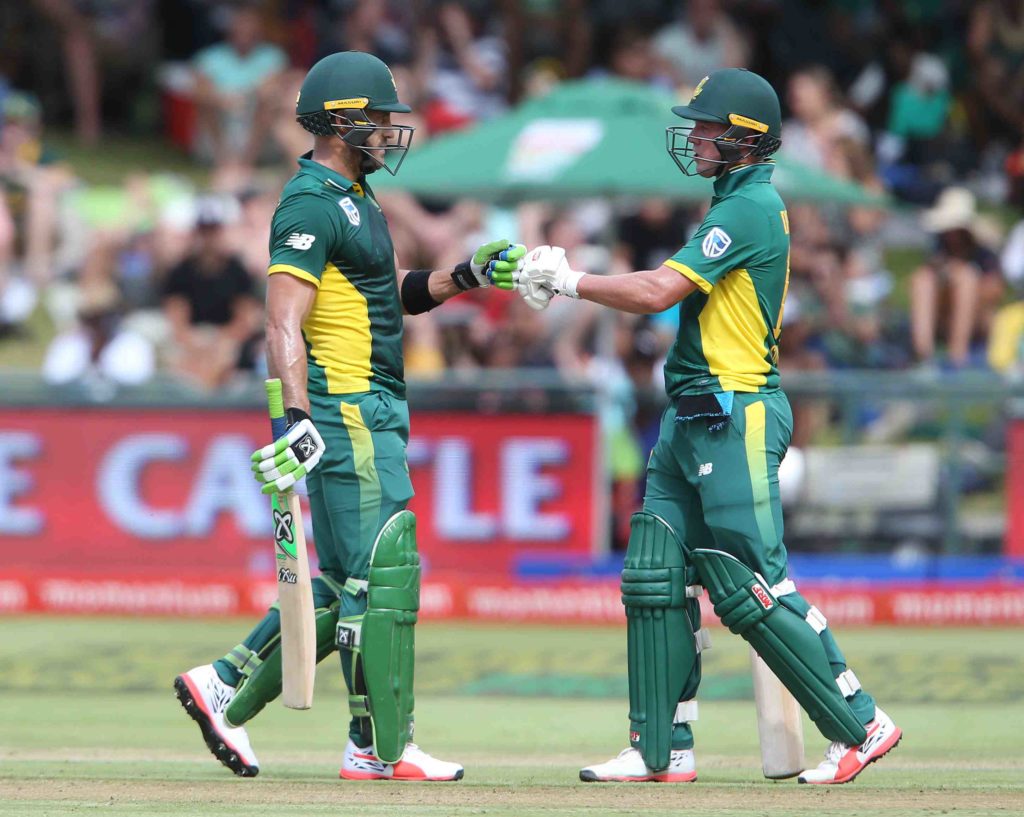Tom Sizeland highlights five points of discussion ahead of the one-off T20 and five-match ODI series against New Zealand.
PUSHING ON
Eleven wins and counting. That’s the situation for the new No 1 ODI side in the world. Whether or not they want that sort of status with a Champions Trophy coming up, they go into the five-match series against New Zealand brimming with confidence. But they know full well that this is a different kettle of fish.
It will be the Proteas’ first limited-overs series outside their own country since the ill-fated Tri-Nation series in West Indies last June, and New Zealand, in their conditions, will provide a stauncher challenge. They’re on a decent run themselves, having avoided defeat in their last six matches. The Proteas will need to win this series 3-2 to hold on to their No 1 ranking.
ONE-OFF T20
The T20 itself bears little significance, but with the same squad being used for the ODI series, it’s a good opportunity to become familiar with the conditions and carry a bit of a psychological boost through to the ODI series. That is, of course, if the weather holds, with rain expected to threaten the entirety of the match. Presuming it does, the Proteas will hope to extend an already proud record that has seen them win 10 of their last 14 matches.
Auckland might present unwelcome memories for the majority of the South African side, who last played there in their dramatic semi-final defeat in the World Cup. A whole host of regulars return to the South African side after their series defeat to Sri Lanka. In contrast, there are some notable omissions from the Black Caps side, including the dropped Ross Taylor and the injured Martin Guptill. They are, however, still the No 1 T20 side in the world.
THE OPPOSITION
Sri Lanka provided very little competition in the ODI series. New Zealand are ranked three places above them in third place, and could even go back to No 1 in the unlikely event of a whitewash. They will have to improve their record against the visitors significantly, with South Africa boasting a 38-22 record against them. The Black Caps have only won two of the last eight ODIs against the South Africans, but one of them, of course, was one of the most important in their history, with the Kiwis sealing that World Cup final berth. New Zealand haven’t actually won an ODI against their opposition in a bilateral series at home since 2004, and it was last time they beat the Proteas in a series there, which ended 5-1.
The New Zealanders have an excellent balance to their side at the moment, with power up front and a wealth of middle-order options to choose from. The fact that Corey Anderson, BJ Watling and Colin Munro have all missed out on the squad reflects that. They’ve arguably got the best pace bowling attack in the world, with Trent Boult sitting at No 2 in the world rankings and Matt Henry at No 8, while Tim Southee is on a good run of form and Lockie Ferguson has proven he has gas to burn too.
DUMINY UNDER PRESSURE
Unfortunately this is said quite often, but JP Duminy simply has to do more at No 5 in the batting order. While Hashim Amla, Quinton de Kock, Faf du Plessis and David Miller all scored centuries, Duminy’s 28 not out was his best score against a weak Sri Lankan bowling attack, at a strike rate of 74.19. He provides a useful sixth bowling option, but can he find an extra gear against a stronger bowling attack? Is he the best No 5 batsman in the country? He proved critics wrong in the Test format, but the selectors will run out of patience if he fails to make an impact in New Zealand.
MISSED A TRICK?
Have the Proteas missed a trick by only picking 14 players for the series? The selectors opted not to choose a replacement for the injured Lungi Ngidi for the Sri Lanka series, and after winning it 5-0, they’ve decided to stick to the formation. But it wouldn’t have hurt to have included an extra paceman, especially seeing as this is the last chance to test combinations before they head over to England. The bowling attack weren’t really tested against the Sri Lankans, but in the brief moments that they were, inconsistent lines and lengths from Kagiso Rabada and Wayne Parnell were exposed. There’s talk of Vernon Philander making a return for the final two ODIs, and they could do with a bit of experience over there to calm younger heads.
Photo: Carl Fourie/Gallo Images







